Dive into the dynamic world of Agile retrospectives with our handpicked selection of 10 classic techniques. Designed to energize your team's reflection and planning sessions, each technique offers unique insights and actionable strategies.
Here's what we'll cover for each method:
- What they are
- When they’re best to use
- How to use them
Listed: 10 Best Agile Retrospective Ideas
These are great agile retrospective ideas:
Mad Sad Glad, Start Stop Continue, The 4Ls, Sailboat, DAKI, KALM, Starfish, Easy As Pie, Lean Coffee, and WWW.
1. Mad Sad Glad
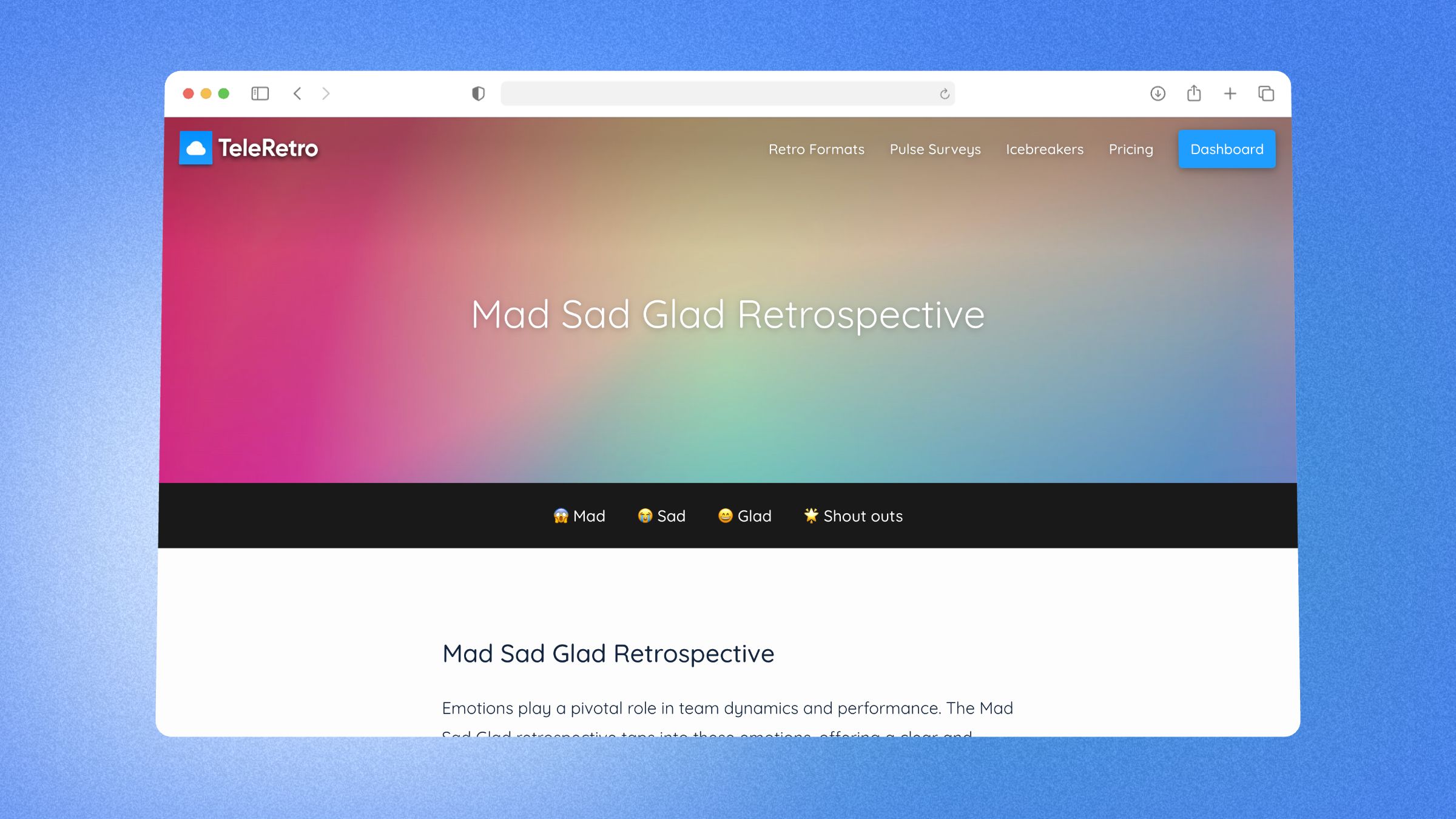
- Definition: This is a simple retrospective technique that involves asking team members to write down what made them glad, sad, and mad during the last sprint.
- Why use: This technique is quick and easy to use, and it can help to identify the team's strengths, weaknesses, and areas for improvement.
- How to use:
- Invite each member to your board.
- Ask team members to write down what made them glad, sad, and mad during the last sprint.
- Once everyone is done, have everyone share their notes with the group.
- Discuss the themes that emerge from the notes.
2. Start Stop Continue
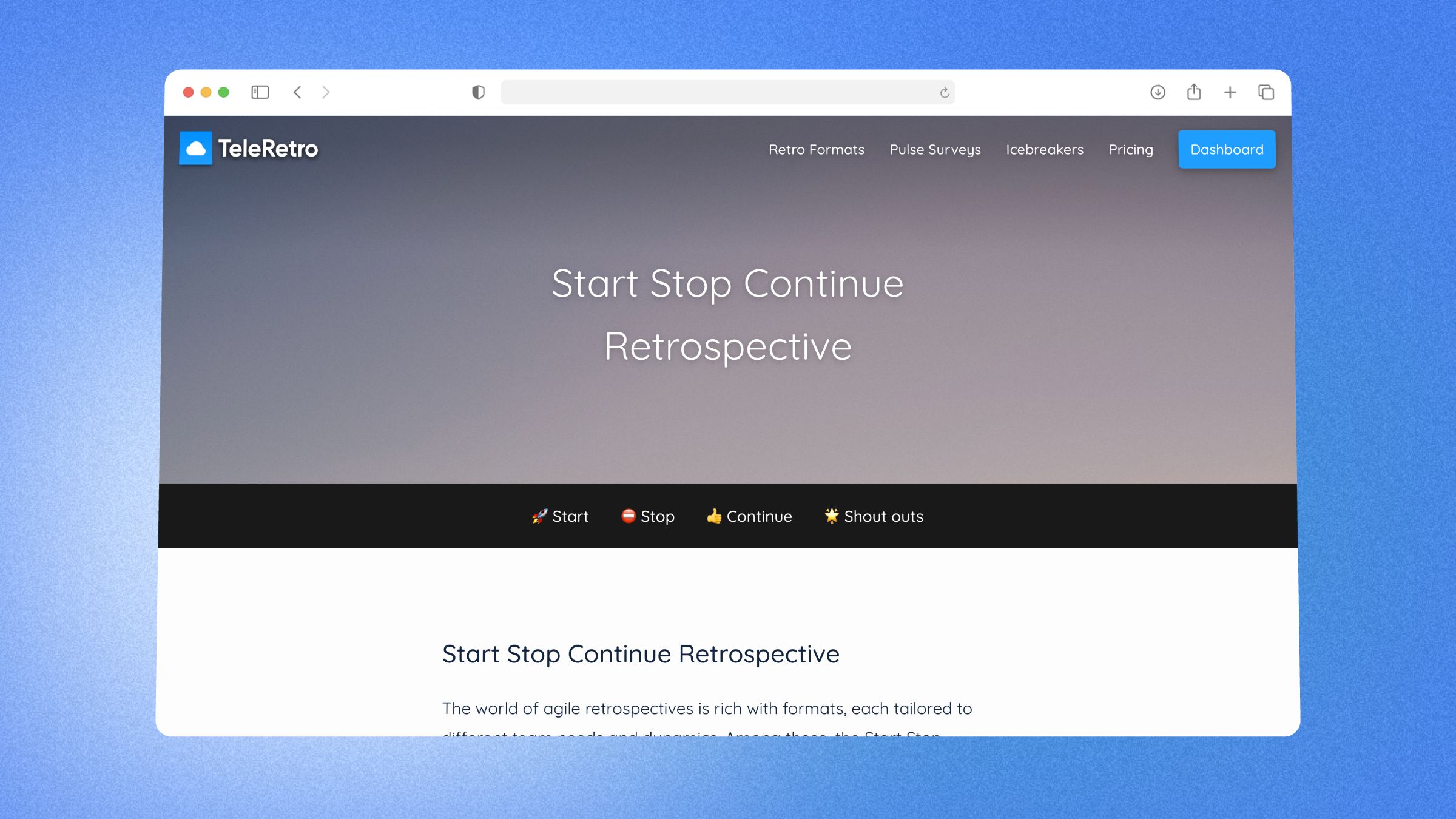
- Definition: This retrospective technique involves asking team members to identify what they would like to start doing, stop doing, and continue doing in the next sprint.
- When to use: This technique is a good choice for teams that are looking to focus on specific changes to their workflow.
- How to use:
- Invite members to your board.
- Ask team members to write down what they would like to start doing, stop doing, and continue doing in the next sprint.
- Once everyone is done, have everyone share their notes with the group.
- Discuss the themes that emerge from the notes and vote on the top three ideas.
3. The 4 Ls
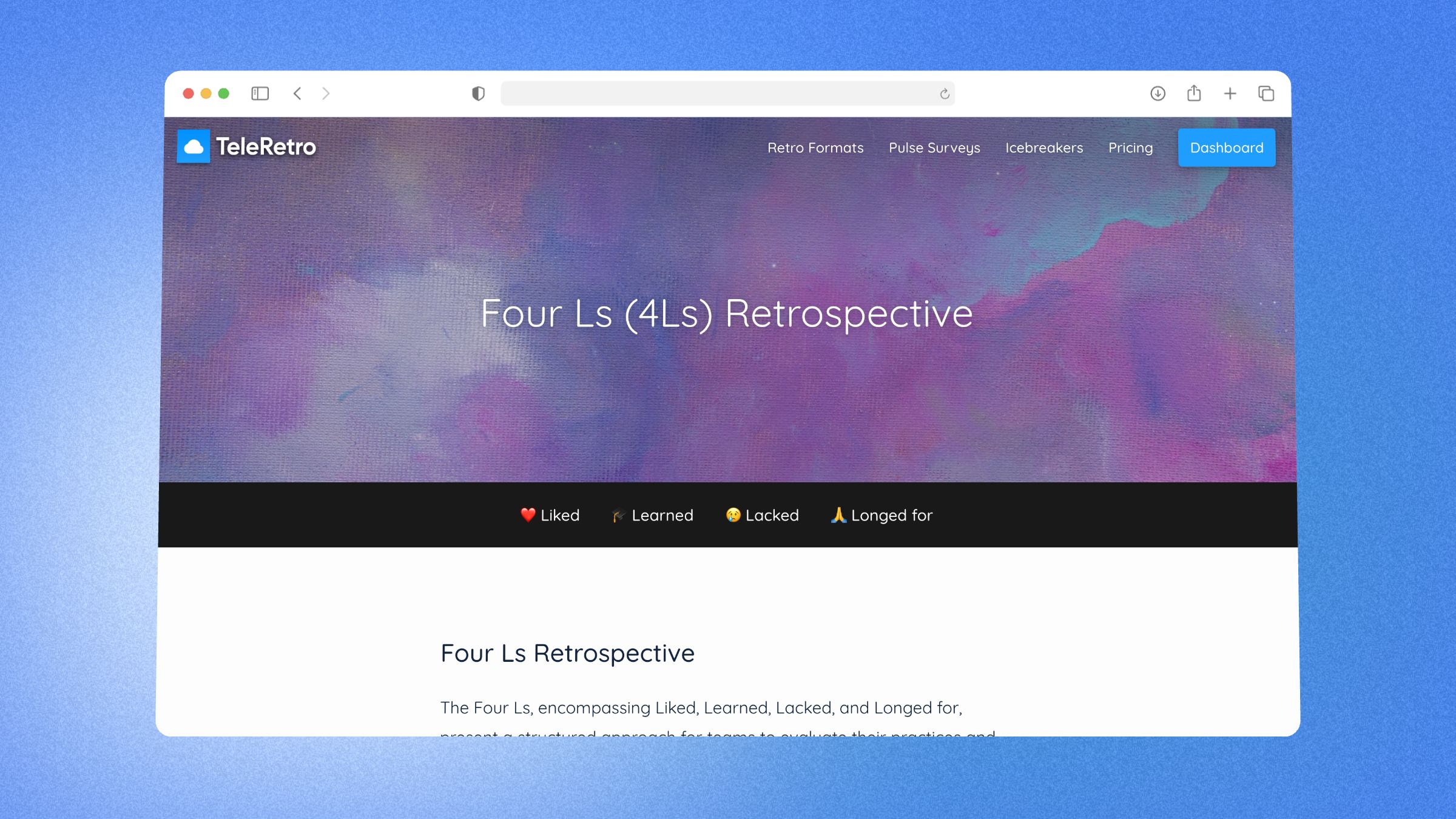
- Definition: This retrospective technique involves asking team members to reflect on what they liked, learned, lacked, and longed for during the last sprint.
- When to use: The 4 Ls retrospective format is best used when seeking a balanced reflection on a team's experiences, particularly at the end of a project or during periods of significant change, as it encourages constructive feedback and promotes comprehensive team engagement.
- How to use:
- Invite everyone to your board.
- Ask team members to write down what they liked, learned, lacked, and longed for during the last sprint.
- Once everyone is done, have everyone share their thoughts with the group.
- Discuss the themes that emerge from the notes and identify any common threads.
4. Sailboat

- Definition: This retrospective technique involves asking team members to imagine that they are sailing a boat. They then write down what is helping them to sail smoothly (the wind) and what is holding them back (the anchor).
- When to use: This technique is a good choice for teams that are feeling stuck or that are looking to overcome obstacles.
- How to use:
- Ask team members to write down their thoughts related to each category:
- 💨 Wind: Things helping the team
- ⚓️ Anchor: Things slowing the team down
- 🧗♀️ Rocks: The risks or potential pitfalls
- 🏝 Island: The ultimate goal or vision
- Once everyone has contributed, discuss each category to share insights and experiences.
- Discuss the themes that emerge from the notes and identify any common threads.
- Ask team members to write down their thoughts related to each category:
5. DAKI (Drop Add Keep Improve)
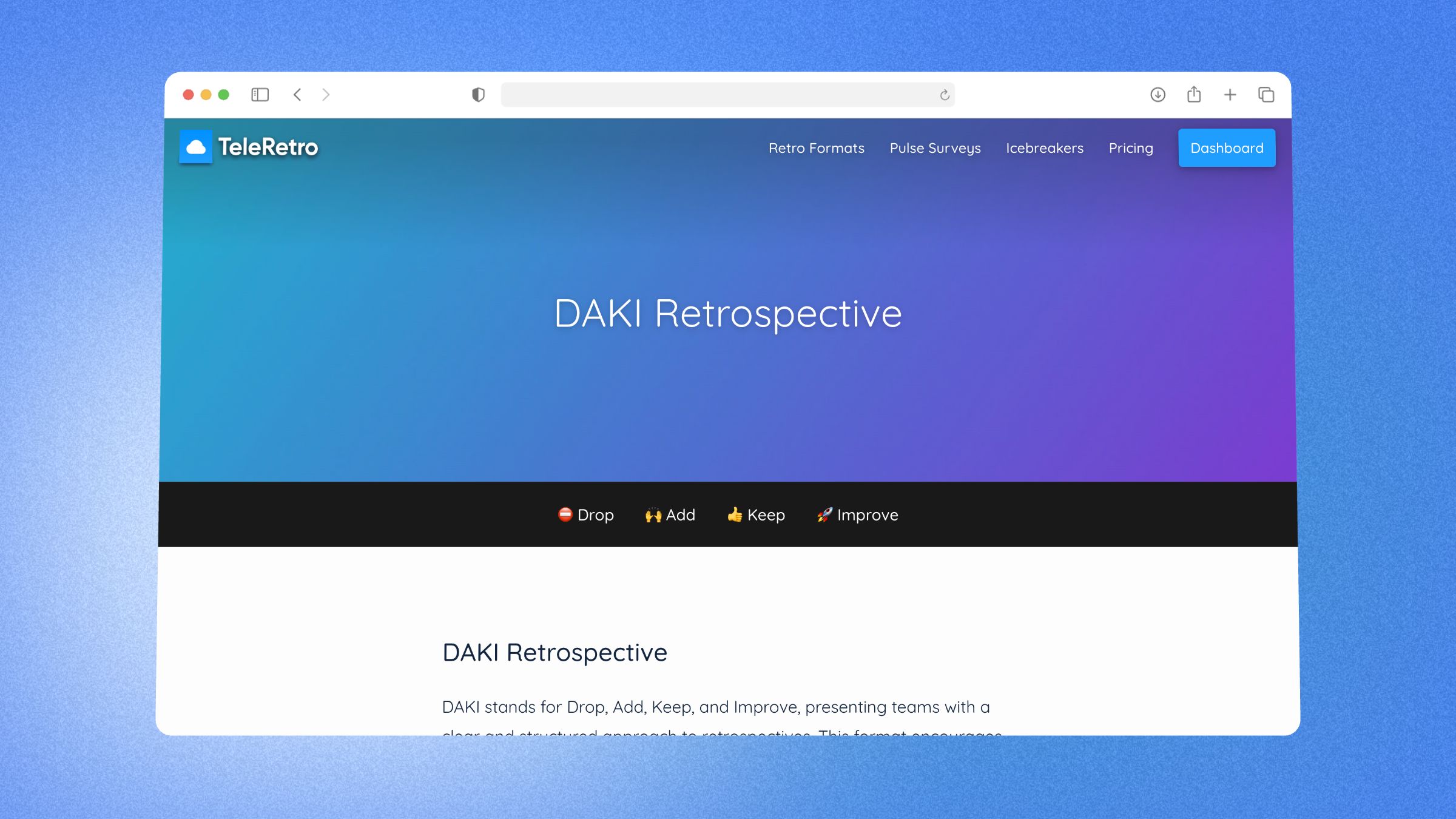
- Definition: This retrospective technique involves asking team members to identify what they should drop, add, keep, and improve.
- When to use: This technique is a good choice for teams that are looking to make a lot of changes to their workflow.
- How to use:
- Invite team members to your board.
- Ask team members to brainstorm ideas for things they should drop, add, keep, and improve.
- Once everyone is done, have everyone share their ideas with the group.
- Discuss the themes that emerge from the ideas and vote on the top three ideas for each category.
6. KALM
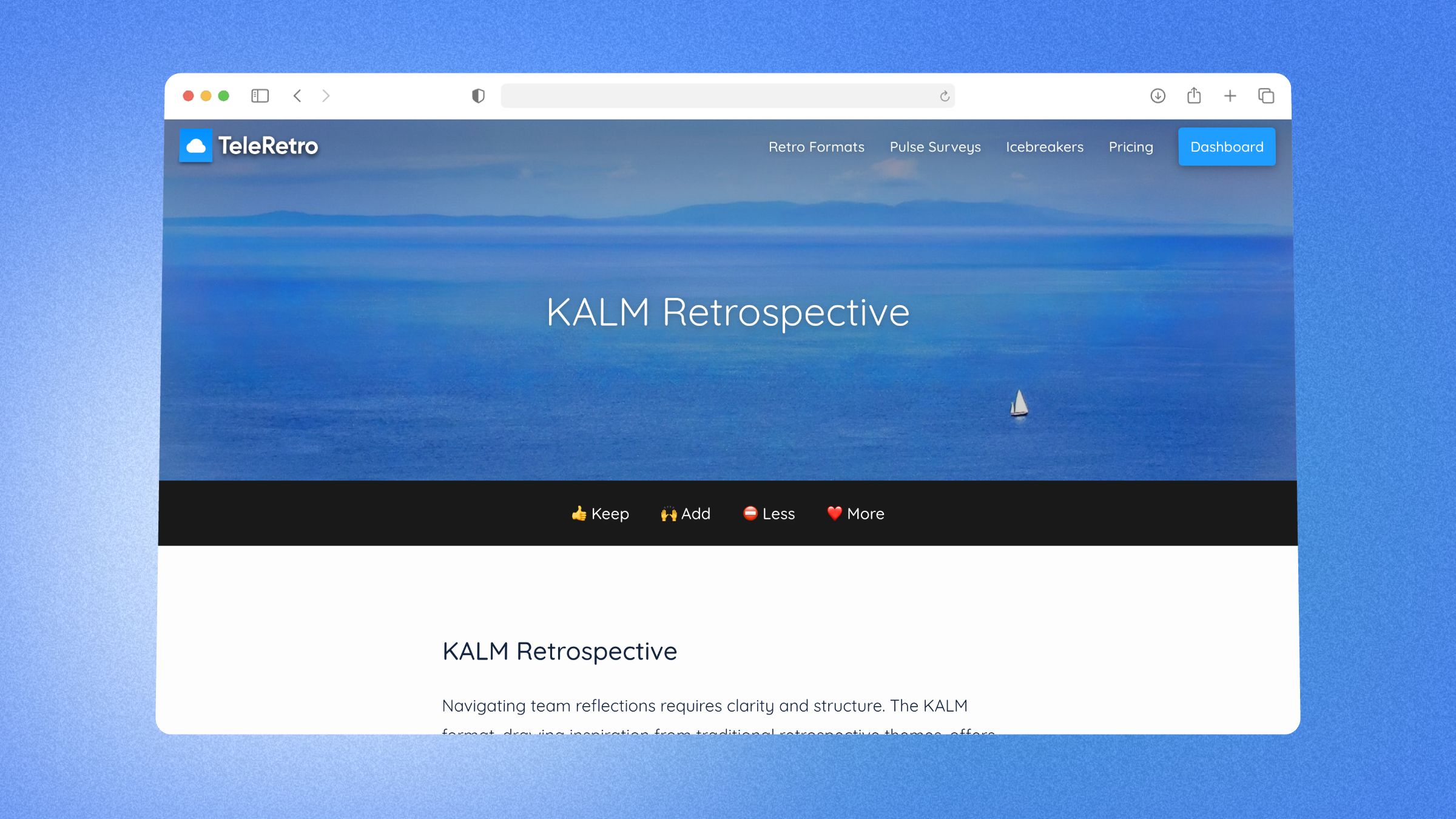
- Definition: KALM is a retrospective technique that stands for Keep, Add, Less, More. It helps teams reflect on their current practices and decide what they should keep doing, add to their process, do less of, and do more of.
- When to use: This technique is ideal for teams seeking continuous improvement in their workflow and processes. It's particularly useful when teams need a structured way to evaluate and enhance their working methods.
- How to use:
- Invite team members to your board.
- Ask team members to write down their thoughts under each category:
- 👍 Keep: What is working well and should be continued?
- 🙌 Add: What new practices or tools should the team consider adopting?
- ⛔️ Less: What current activities or processes are not as effective and should be reduced?
- ❤️ More: What practices or processes are working well and should be done more frequently?
- Once everyone has contributed their ideas, facilitate a discussion to explore each category.
- Identify actionable items and agree on steps to implement the changes suggested under each category.
7. Starfish

- Definition: This retrospective technique involves asking team members to brainstorm ideas for improvement and then vote on the top three ideas.
- When to use: This technique is a good choice for teams that are looking to make a few specific changes to their workflow.
- How to use:
- Ask team members to brainstorm ideas for improvement.
- As team members share their ideas, write them on the tentacles of the starfish.
- Once everyone is done, have everyone vote on the top three ideas.
- Discuss the themes that emerge from the ideas and identify any common threads.
8. Easy As Pie
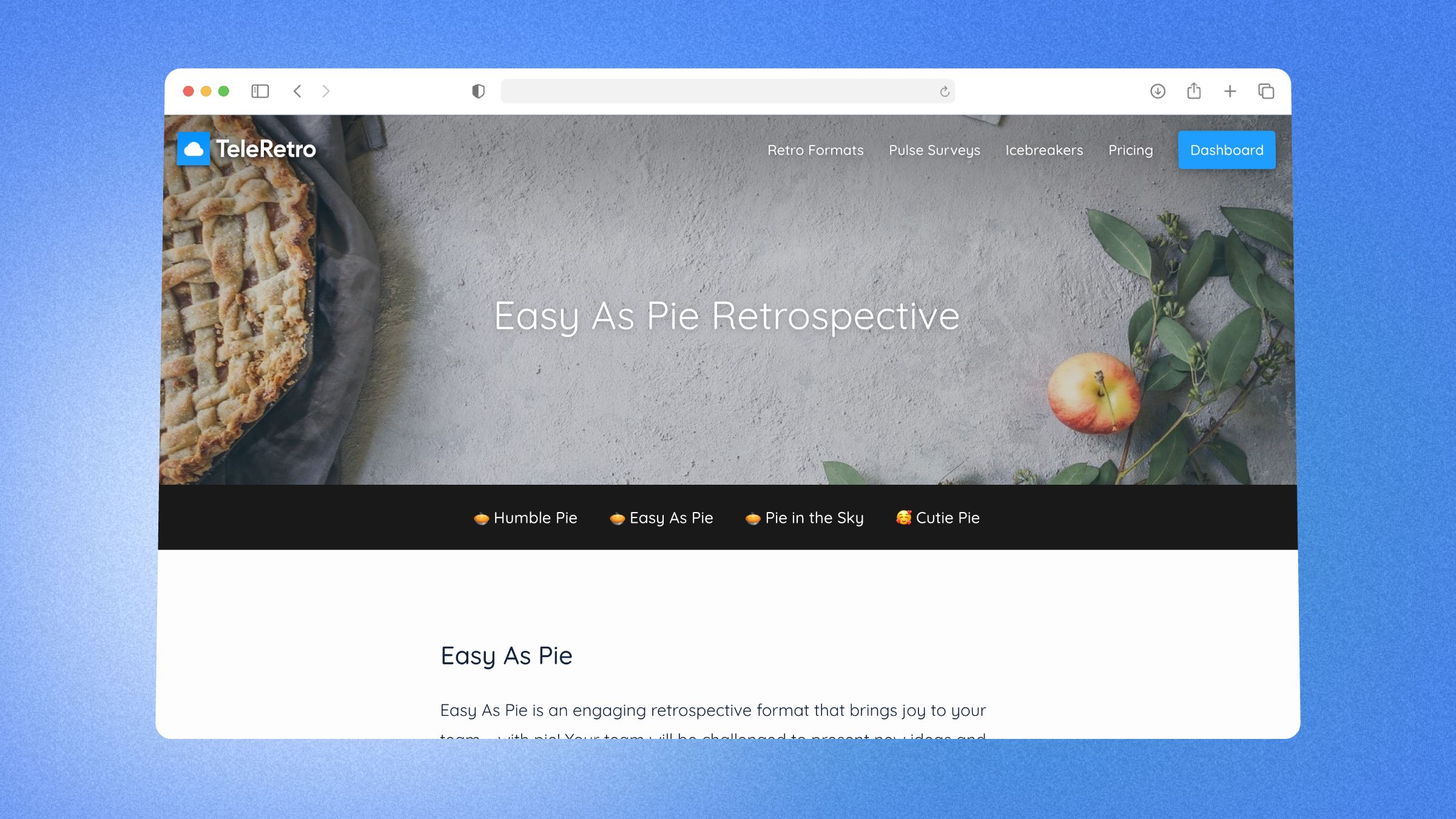
- Definition: "Easy as Pie" is a retrospective technique that uses pie-themed categories to help teams reflect on various aspects of their work. The categories include Humble Pie (challenges faced), Easy As Pie (successes), Pie in the Sky (unrealistic ideas or goals), and Cutie Pie (team acknowledgements or positive moments).
- When to use: This technique is suitable for teams looking for a light-hearted, engaging way to conduct retrospectives. It's especially effective in teams that appreciate creative and fun approaches to reflection and planning.
- How to use:
- Invite team members to your board.
- Ask team members to reflect and write down their thoughts related to each category:
- 🥧 Humble Pie: Challenges or difficulties encountered during the period.
- 🥧 Easy As Pie: Tasks or projects that were successfully completed with ease.
- 🥧 Pie in the Sky: Ideas or goals that were perhaps too ambitious or unrealistic.
- 🥰 Cutie Pie: Positive moments, team achievements, or individual acknowledgements.
- Once everyone has contributed, discuss each category to share insights and experiences.
- Use the discussion to plan improvements, celebrate successes, and set realistic, achievable goals for the future.
9. Lean Coffee
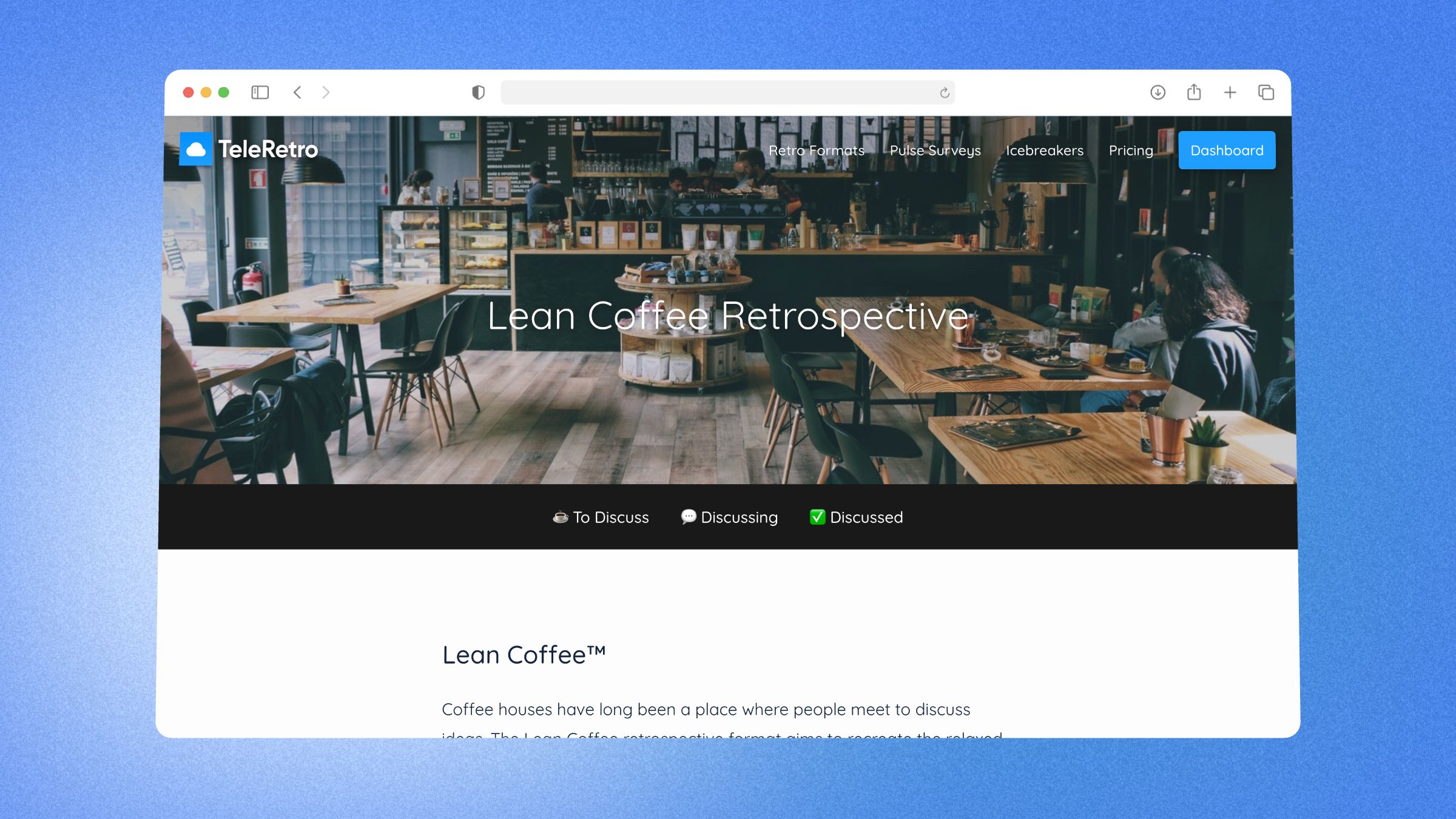
- Definition: "Lean Coffee" is a structured but agenda-less meeting approach. It follows a simple format where participants build the agenda, and discussions are time-boxed. The categories used are 'to discuss', 'discussing', and 'discussed'.
- When to use: This technique is ideal for meetings where participants want to ensure a democratic process in discussing topics. It's particularly effective in situations where there's no preset agenda or when you want to encourage full participation from all attendees.
- How to use:
- Invite team members to your board.
- Participants write down topics they want to discuss on in the 'to discuss' column.
- The group votes on which topics to discuss first.
- Move the chosen topic to the 'discussing' column. Discuss each topic for a set amount of time (typically 5-10 minutes).
- After discussing, move the topic to the 'discussed' column, and then choose the next topic to discuss from the 'to discuss' column.
- Continue this process until the meeting time ends or all topics have been covered.
- Use the outcomes from the 'discussed' column for action items or follow-up.
10. WWW

- Definition: "WWW" is a retrospective technique that stands for Worked Well, Kinda Worked, Didn't Work. It's designed to help teams analyze various aspects of their project or workflow, focusing on what was successful, what was somewhat effective, and what failed.
- When to use: This technique is best suited for teams looking to evaluate their performance and identify areas for improvement. It's particularly useful after completing a project or at regular intervals during long-term projects.
- How to use:
- Invite team members to your board.
- Ask team members to reflect on recent activities and write down their observations under each category:
- 👍 Worked Well: Identify the strategies, processes, or actions that were clearly successful.
- 🤔 Kinda Worked: Discuss aspects that had mixed results or were only moderately successful.
- 👎 Didn’t Work: Point out the elements that were unsuccessful or had negative outcomes.
- Once all points are listed, the team should discuss each category to understand the reasons behind the successes and failures.
- Develop action plans based on this discussion to reinforce what worked, improve what kinda worked, and address or eliminate what didn't work.
Conclusion
This is our list containing 10 of the best Agile Retro templates. These time-tested techniques have been embraced by Agile teams for years, offering a reliable way to reflect, communicate, and drive continuous improvement. Whether you're aiming to identify strengths and weaknesses, foster creativity, or streamline processes, these retrospective ideas have proven their value over time.
